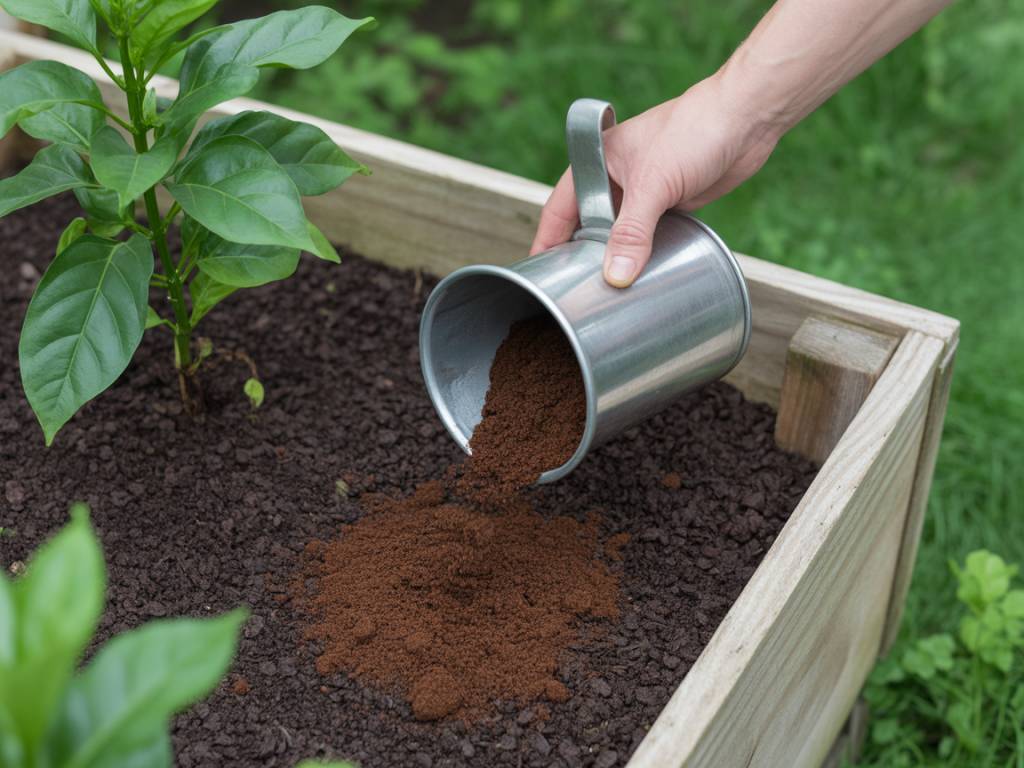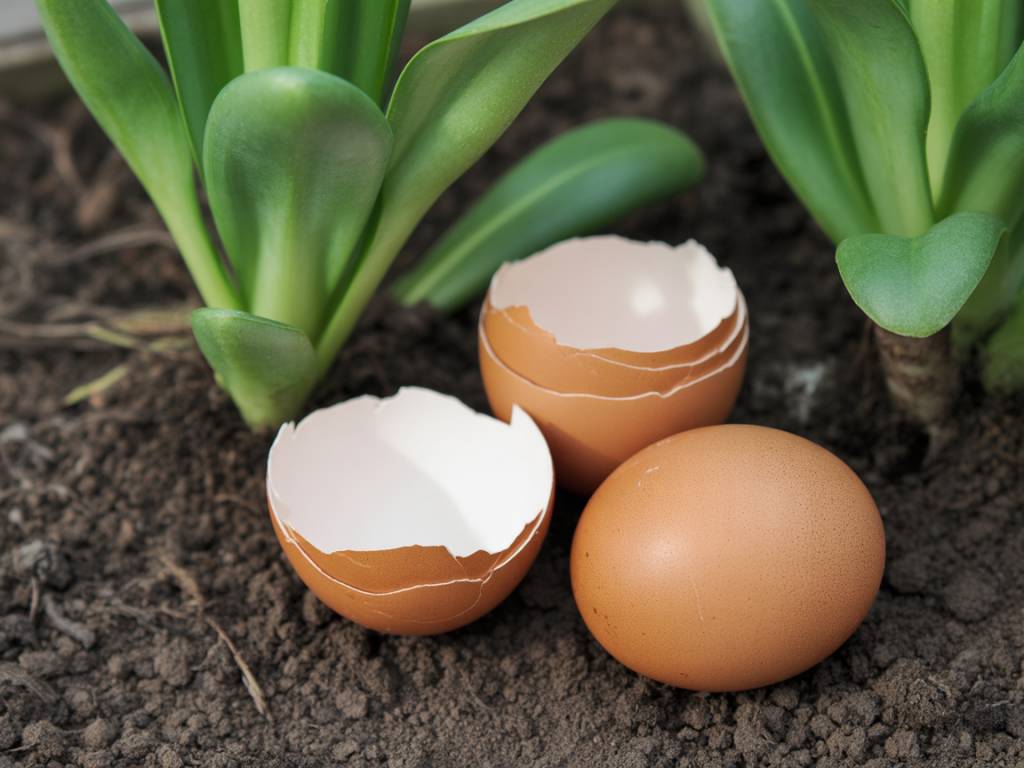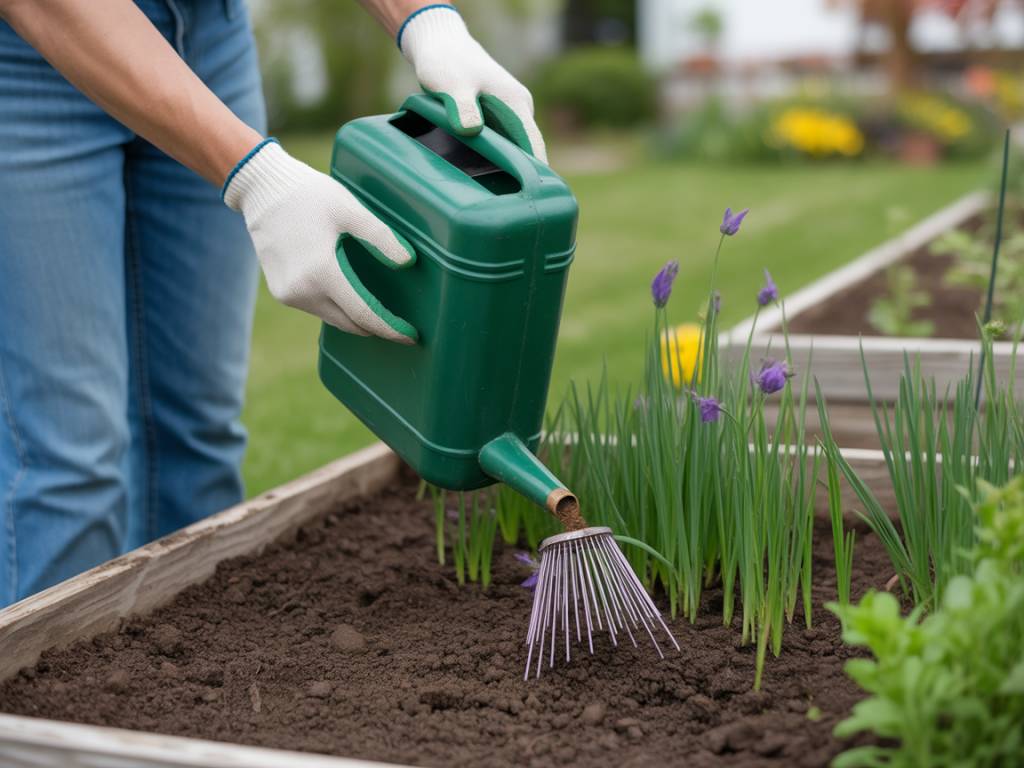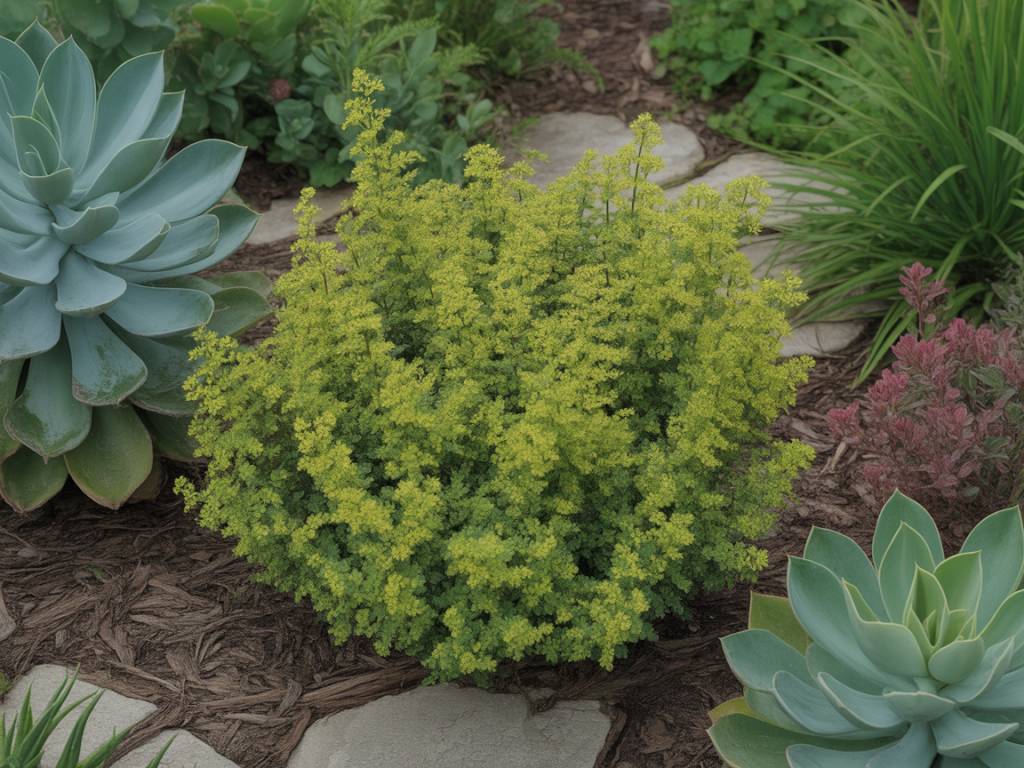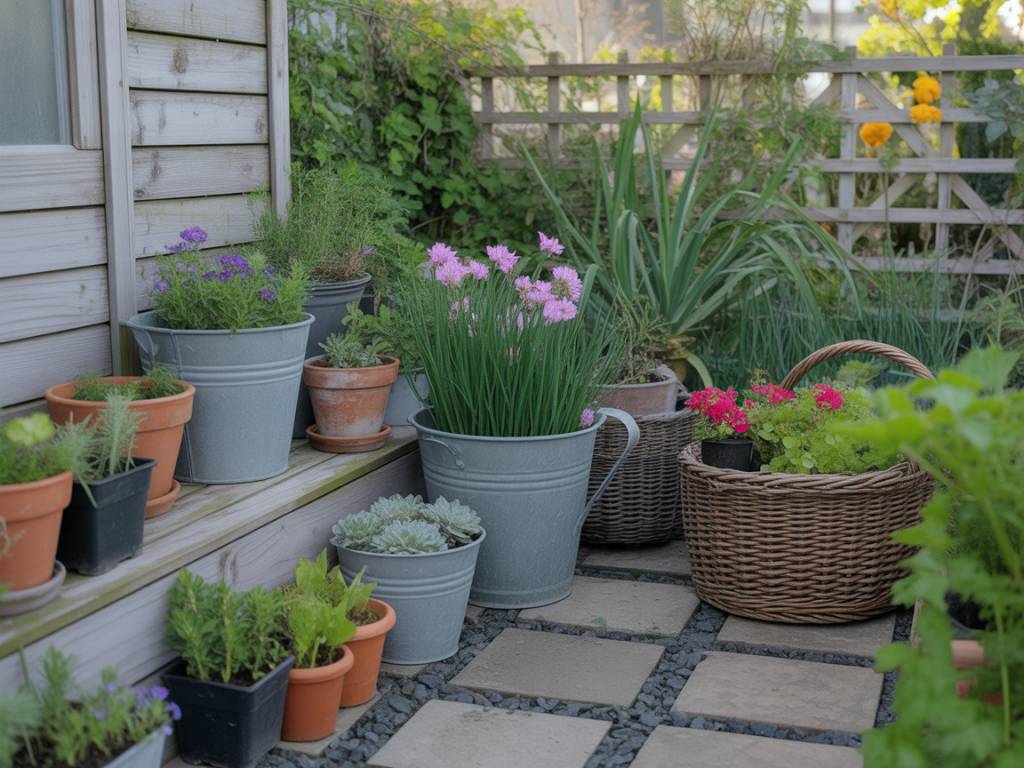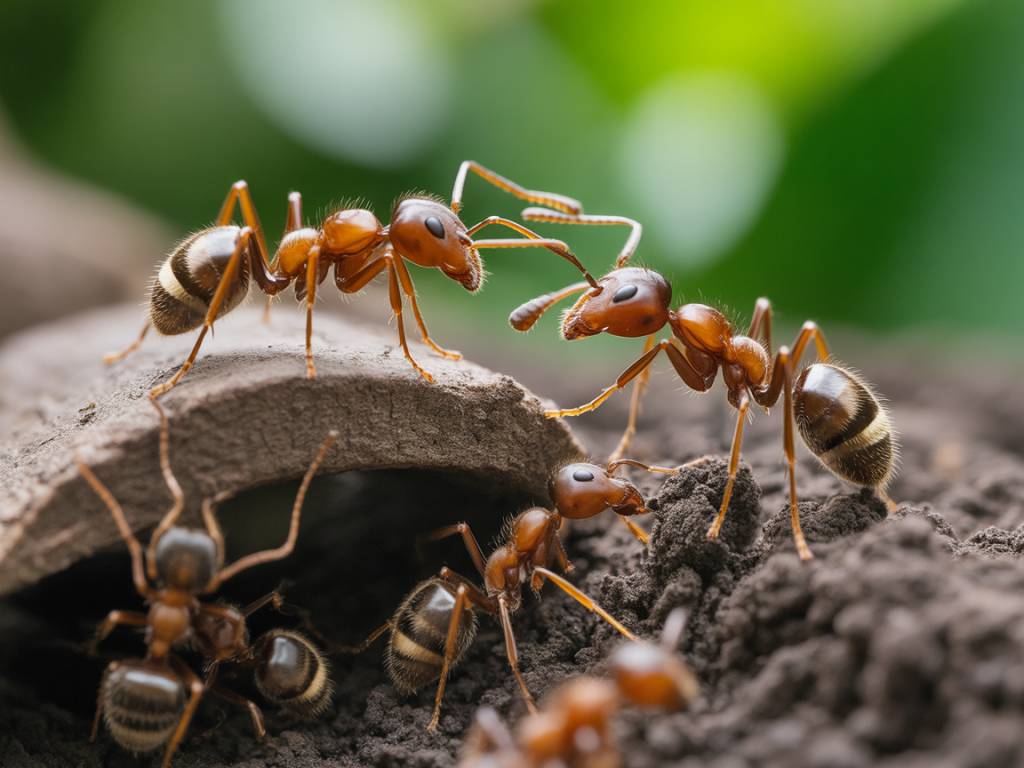There are few pleasures as homely as padding into the garden, mug in hand, still warm from the morning’s coffee. For many of us, the next instinct is simple: “Could these coffee grounds be useful out here?” In low-input permaculture beds, where we work with nature rather than against her, that question becomes even more important. Every material we add should earn its place.
Let’s walk together along the garden path and look, calmly and practically, at what coffee grounds really do in the soil, how to use them safely, and when it’s better to hold back.
What coffee grounds actually are (and why it matters)
Before sprinkling them with a carefree hand around your beans and roses, it helps to know what you’re really adding.
Used coffee grounds are:
- Rich in organic matter – mostly lignin and cellulose, which feed soil life as they break down.
- Mildly acidic to neutral – used grounds usually sit around pH 6–7, not the strong acid many imagine.
- Moderately high in nitrogen – about 2% by weight, with small amounts of potassium, phosphorus, magnesium and trace minerals.
- Finely textured – a bit like a very fine mulch or silt.
From a permaculture perspective, that description gives us clues:
- They can feed microbes rather than plants directly.
- They are a good addition to compost and worm systems.
- They can change the feel and structure of the soil surface if used in excess.
In other words, coffee grounds are more “microbe food” than instant fertiliser. This is good news for low-input gardens, where soil life is our quiet, tireless ally.
Are coffee grounds good for low-input permaculture beds?
The short answer is: yes, but only when used with care, in the right context, and never as a miracle cure.
Low-input permaculture beds rely on:
- Diverse organic matter (leaves, prunings, straw, kitchen scraps).
- Minimal disturbance – no regular digging or tilling.
- Closed nutrient loops – reusing what the household and garden already produce.
Coffee grounds can fit this philosophy beautifully because they are a household waste turned into a soil resource. However, like a strong espresso, too much at once can overwhelm.
Used thoughtfully, coffee grounds can offer:
- Food for soil organisms that power nutrient cycling.
- A gentle nitrogen top-up for mulched, low-input beds.
- Increased organic matter over time, supporting structure and moisture holding.
But there are also potential problems if we treat them as a “free-for-all” fertiliser. Let’s untangle both sides.
The benefits: when coffee grounds shine in the garden
Imagine, for a moment, the quiet life under your mulch: fungal threads weaving, springtails dancing, earthworms slowly pulling leaves into the dark. Coffee grounds arrive there as a feast for many of these unseen workers.
Some key benefits in low-input permaculture beds:
- They feed soil microbes
Coffee grounds are relatively easy for fungi and bacteria to colonise. In a bed covered with leaves, wood chips, or straw, sprinkling small amounts of grounds beneath or between layers gives those organisms a new energy source. In return, they break down organic matter faster, making nutrients steadily available to plants. - They support nitrogen cycling
The nitrogen in coffee grounds is mostly released slowly as microbes digest it. That gentle release suits perennial-rich beds, guilds around fruit trees, and mixed plantings where we want steady nutrition rather than quick bursts. - They add fine organic material
In sandy soils, a light, mixed-in use of coffee grounds (through surface mulching and worm activity, not digging) can slightly improve water retention. In very heavy clays, a small proportion of fine, organic particles can help aggregate crumbs over time—though they must be balanced with coarser materials, not used alone. - They are free and local
From your own kitchen or a friendly café, coffee grounds are often abundant. In a low-input system, this “waste” becomes part of a closed loop: coffee nourishes you, then its remains nourish the soil that grows your food.
None of these benefits, on their own, are dramatic. But permaculture gardens rarely rely on drama. Instead, they thrive on gentle, repeated additions that slowly build a living soil.
The risks: what can go wrong with coffee grounds
Now for the shadows at the edge of the bed. Coffee grounds are not harmless just because they’re natural. Several issues can arise, especially if we use them in a rush or in thick layers.
- They can form a crust
Because grounds are so fine, a thick surface layer can compact and dry out, forming something like a tight, dark felt. Water then runs off instead of soaking in, and seeds or young roots can struggle beneath. - They can temporarily “lock up” nitrogen
While microbes are busy breaking down fresh organic matter, they sometimes grab extra nitrogen from the surrounding soil, leaving plants briefly short. When coffee grounds are mixed directly into the root zone in large amounts, this effect can stress hungry annuals. - They may inhibit some seeds and seedlings
There is evidence that large amounts of coffee grounds can slow germination and growth in some plants, perhaps due to remaining compounds in the coffee. Sensitive young seedlings, especially in trays or freshly sown beds, are best kept away from thick applications of grounds. - They can upset soil balance if overused
Relying heavily on a single input—whether coffee, manure, or anything else—moves us away from the breadth and resilience that permaculture favours. An overabundance of any one material can skew the fungal–bacterial balance, pH microzones, or physical texture of the topsoil.
None of this means “never use coffee in the garden”. It simply nudges us toward moderation and diversity. Think of coffee grounds as a flavour, not the whole meal.
Best ways to use coffee grounds in a permaculture system
So, how can we welcome coffee into our beds without inviting problems? The key lies in indirect use, mixing, and small quantities.
Add coffee grounds to compost, not straight to beds
From a soil-life perspective, the compost heap is the perfect first stop for your coffee grounds.
In a balanced compost mix, grounds behave like a “green” (nitrogen-rich) ingredient, even though they look brown. You can:
- Layer them thinly between “browns” such as dry leaves, shredded cardboard, or straw.
- Aim for variety – pair coffee with vegetable peelings, tea leaves, eggshells, and garden trimmings.
- Keep each coffee layer under 2–3 cm to avoid compact mats that go anaerobic.
In a low-input garden, your compost heap becomes a quiet factory turning coffee and other scraps into a stable, microbe-rich humus. When you later add that compost to your beds as a top-dressing, the coffee is no longer “coffee”; it is simply part of a balanced, mature soil food.
Feed coffee grounds to worms
If you have a wormery or a vermicompost trench integrated into your beds, the worms will happily handle modest amounts of coffee grounds.
Use them like this:
- Add small, regular amounts – a handful at a time, mixed with softer food scraps.
- Cover with carbon-rich bedding like shredded paper or leaves to keep things airy.
- Observe your worms – if you notice them retreating from a corner rich in coffee, reduce the dose.
The castings produced by worms are a gentle, beautifully textured amendment. In a permaculture bed, those castings can be buried in small pockets around hungry plants or spread in a thin layer under mulch.
Use coffee grounds as part of a diverse mulch
Direct application to beds is where we need the most care. Instead of piling coffee thickly, imagine it as a seasoning sprinkled among broader, more structural mulches.
For example, in a perennial permaculture bed you might:
- Lay a base of coarse material – shredded prunings, bark, or straw.
- Gently scatter a very thin layer of coffee grounds over the surface (you should still see the mulch beneath).
- Top with leaves or another light layer to prevent the grounds forming a crust.
Used this way, the coffee grounds rarely touch plant stems directly. Instead, they settle into the mulch, where fungi and invertebrates can integrate them slowly into the soil below.
As a guide, if you can smell coffee clearly from your beds, you have probably used more than is ideal.
Plants and situations where coffee grounds are more (or less) welcome
Gardeners often ask, standing with a bucket of grounds in hand, “Which plants like coffee?” The truth is more subtle than simple lists of “coffee lovers” and “coffee haters”, but we can draw some practical lines.
Generally suitable contexts:
- Established perennials – fruit trees, berry bushes, ornamental shrubs, and hardy perennials cope better with the slow changes coffee brings, especially when it arrives via compost or mixed mulch.
- Woodland-style guilds – where leaf litter, woody debris, and fungi already dominate, coffee’s fine, nitrogenous character complements the fungal feast.
- Mulched pathways and “chop and drop” areas – where plants are less sensitive and soil life is the main focus, small amounts of coffee can join the regular rain of organic matter.
Situations to avoid or treat very cautiously:
- Seedlings and seedbeds – direct contact with coffee grounds can slow germination or damage tender roots. Keep grounds out of seed trays and newly sown rows.
- Very compacted or waterlogged soils – where drainage is already poor, adding fine material on the surface can worsen the problem.
- Container-grown plants – potting mixes are more delicate ecosystems. A little compost containing some coffee is fine, but avoid sprinkling pure grounds on the surface of pots.
As for plant preferences, some acid-loving species (blueberries, azaleas, camellias) are often said to enjoy coffee grounds. Used grounds are not wildly acidic, but as a small share of the organic matter around these plants, they can fit in well, especially when balanced with leaf litter and bark.
How much coffee is too much?
In low-input permaculture beds, where we cherish balance, “how much” becomes the central question.
A few practical rules of thumb:
- Keep coffee grounds under about 15–20% of any single compost batch by volume. Let them be one note among many.
- On beds, imagine a maximum of 0.5–1 kg of dry grounds per square metre per year, and even that spread out in time and mixed with other materials.
- If you have more coffee than your compost can comfortably absorb, it is perfectly acceptable to give some away or find another outlet. Not every waste must return to your own soil.
Your garden itself will speak to you on this. If you begin to notice:
- Water pooling or running off instead of soaking in.
- A thin, tight “skin” on the soil surface under the mulch.
- Slower growth in annuals where lots of coffee was used directly.
Then it’s time to pause, ease off the coffee, and return to a broader palette of organic materials.
Fitting coffee grounds into a seasonal, low-input rhythm
It can help to fold coffee grounds gently into the turning of the year, rather than thinking of them as a separate, special task. Here are a few quiet ways to do so:
- Winter
As the kettle steams and the days are short, coffee grounds can go straight into a compost heap built from prunings and fallen leaves. They add a little warmth and nitrogen to a largely woody, brown mix. - Spring
When you top-dress your beds with compost, that compost may well contain last winter’s coffee. If you have a worm bin, a small sprinkling of grounds in its feed can help the worms wake up and get busy. - Summer
In dry spells, avoid adding thick coffee layers to the soil surface, as they can bake and repel water. Instead, keep using them in compost or trench systems, letting them work invisibly while plants concentrate on flowering and fruiting. - Autumn
As leaves fall, this is a perfect time to mingle coffee grounds with shredded foliage in new compost heaps. You can also slip a modest amount into the “chop and drop” layers beneath perennials, under a soft duvet of autumn leaves.
In this way, coffee grounds stop being a question mark by the back door and become simply one more quiet ingredient in your yearly soil recipe.
Listening to your own garden
Perhaps the most permaculture-friendly answer to “Are coffee grounds good for the garden?” is: “It depends—on how your own garden responds.”
Every plot has its own story: sandy or clay-rich, young or long-tended, bustling with worms or just beginning to wake. The same bucket of coffee will behave differently in each.
You might try this gentle experiment:
- Choose two similar areas of your garden beds.
- In one, add compost that contains a modest amount of coffee grounds; in the other, compost without coffee.
- Plant the same mix of species, ideally perennials or hardy annuals.
- Across a season or two, notice any differences in growth, soil feel, and moisture.
Over time, this kind of patient observation becomes its own quiet pleasure. You begin to see that the garden is not a machine to be fuelled, but a living tapestry, sensitive to each thread we add.
Coffee grounds can certainly be one of those threads—dark, fragrant, and born of our own daily rituals. Used with moderation, diversity, and a willingness to watch and adjust, they can support the gentle, low-input abundance that permaculture beds are so capable of offering.

